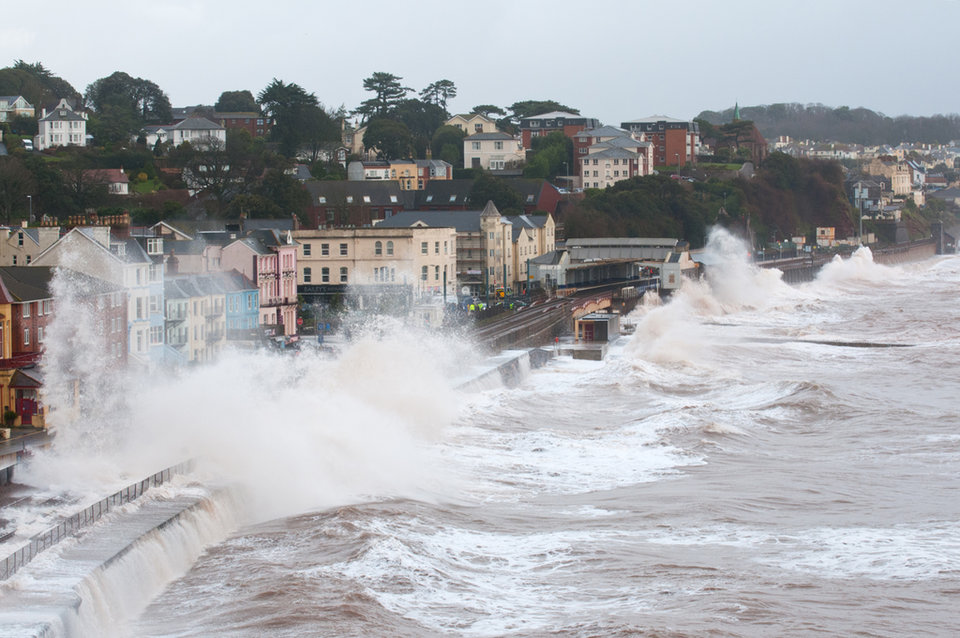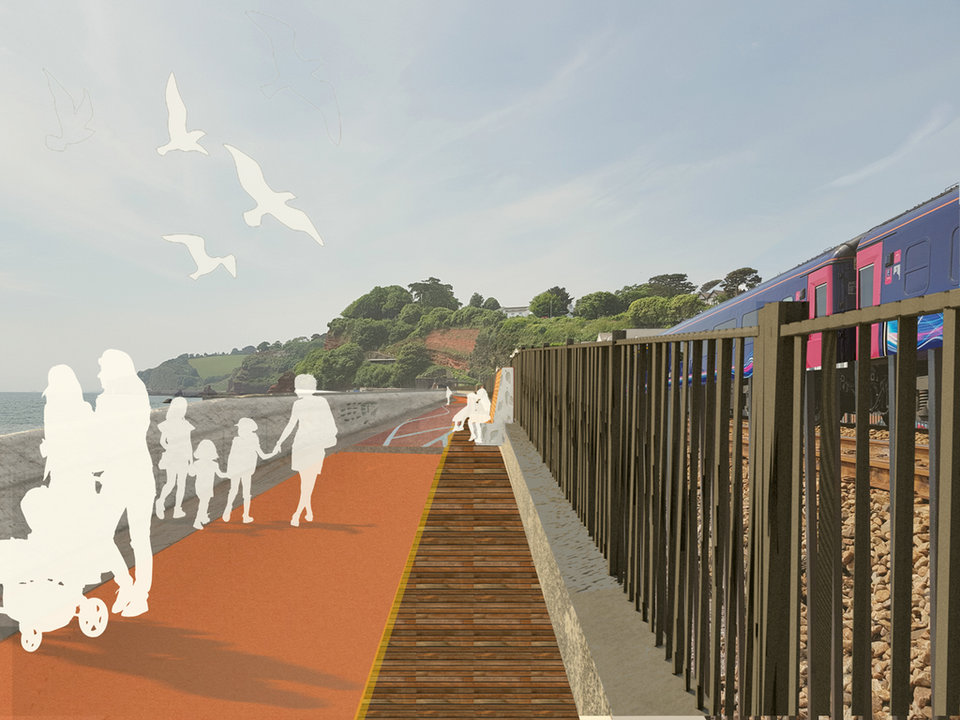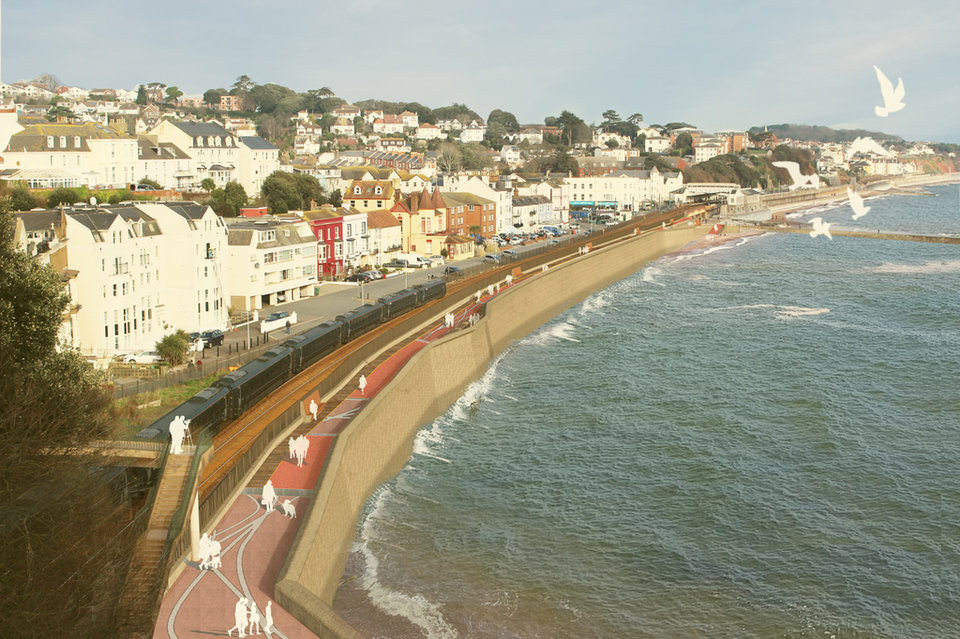The likelihood of climate change-related accidents is forecast to grow even further
A widespread problem
The Dawlish accident represents what could happen to British coastal railways and the communities they serve in the coming decades.
As professor Robert Duck from the University of Dundee told The Guardian in 2015, railways in Cumbria, Wales and Devon are all at risk of severe floods as a result of climate change.
“Much of our coast has railway lines at the edge forming the first line of defence from the sea. This leads to spectacular scenery for passengers to enjoy but increasing difficulties for franchise operators and government,” he said ahead of the release of his book, ‘On the Edge’, about this topic.

Image: Storm waves breaking over the railway track at Dawlish
Supporting his claim, a 2018 study by the Committee on Climate Change titled “Managing the coast in a changing climate” stressed the need to intervene immediately to guarantee the future of hundreds of coastal properties, roads and railways.
It warned that some 520km of railway line are currently at 0.1% or greater risk of coastal flooding in the foreseeable future.
According to the report, the likelihood of climate change-related accidents is forecast to grow even further by the 2080s, when some 650km of railway lines and 92 railway stations will be exposed to major coastal flooding and erosions.
Learning from the Dawlish accident
If anything can be learned from a dangerous weather-driven event like the Dawlish accident, it is that stronger measures need to be adopted.
As far as Dawlish is concerned, works have now started to build new, improved sea wall protection along the damaged part of the line as part of a £30m scheme funded by the UK Government.
As Network Rail senior programme manager David Lovell explains, the project will continue throughout the coming months, with the new wall set to be completed by January next year.
“We will build a new sea wall roughly in line with the current alignment that will be between 7m and 7.5m high,” he explains. “We are doing the foundations now and in September, we will start putting concrete-facing panels attached on to the existing sea wall.”
Other vulnerable parts of the southwestern line passing through Dawlish – and which connects Plymouth and Cornwall to the rest of England – are also being upgraded as part of a wider scheme called the South West Rail Resilience Programme.

Image: Storm wall | Network Rail
Focusing on three intervention areas – among which is the Dawlish sea wall – the scheme hopes to make the rail line running between Exeter and Newton Abbott safer and more resilient to extreme weather conditions.
As part of the programme, Lovell says, Network Rail has collaborated with marine, coastal and geotechnical engineers, as well as railway consultants, to draw a set of plans that will need to be implemented to address current and future climate change-related problems.
“The South West Rail Resilience Programme is going to be delivered over multiple control periods to make sure that the railway is resilient over the next 100 years,” he explains. “We need to implement all those interventions as and when they're required.”
Works have now started to build new, improved sea wall protection
